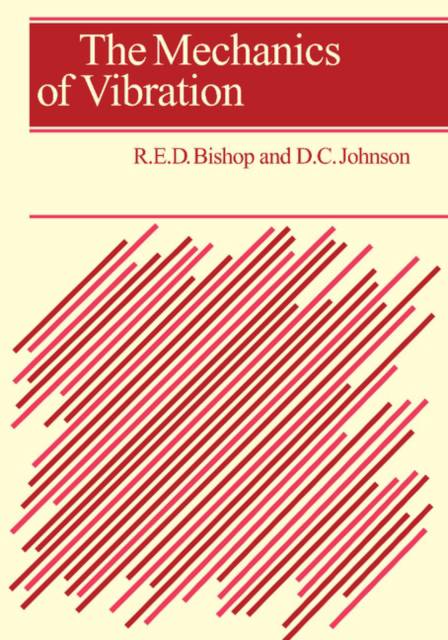
- Afhalen na 1 uur in een winkel met voorraad
- Gratis thuislevering in België vanaf € 30
- Ruim aanbod met 7 miljoen producten
- Afhalen na 1 uur in een winkel met voorraad
- Gratis thuislevering in België vanaf € 30
- Ruim aanbod met 7 miljoen producten
Zoeken
The Mechanics of Vibration
Richard Evelyn Donohue Bishop, D C Johnson, R E D Bishop
Paperback | Engels
€ 86,45
+ 172 punten
Omschrijving
Originally published in 1960, the primary aim of this book was to give the reader an insight into the vibration characteristics of a machine or structure rather than to present them with a recipe for formal calculations. Within the text classical theory is developed by starting from the concept of steady forced motion and then introducing free motion as a limiting case. The concept of resistance or 'dynamic flexibility' is used throughout and provides a link between the treatment of very simple systems, multi-freedom systems with lumped parameters and infinite-freedom systems. It also provides a tool for breaking down complex problems into simpler parts. The mathematics will be understood by a student taking an honors course in engineering, and the book's primary purpose was to provide them with a background for their studies and with a path along which to advance for further work.
Specificaties
Betrokkenen
- Auteur(s):
- Uitgeverij:
Inhoud
- Aantal bladzijden:
- 610
- Taal:
- Engels
Eigenschappen
- Productcode (EAN):
- 9781107402454
- Verschijningsdatum:
- 21/07/2011
- Uitvoering:
- Paperback
- Formaat:
- Trade paperback (VS)
- Afmetingen:
- 178 mm x 254 mm
- Gewicht:
- 1043 g

Alleen bij Standaard Boekhandel
+ 172 punten op je klantenkaart van Standaard Boekhandel
Beoordelingen
We publiceren alleen reviews die voldoen aan de voorwaarden voor reviews. Bekijk onze voorwaarden voor reviews.








